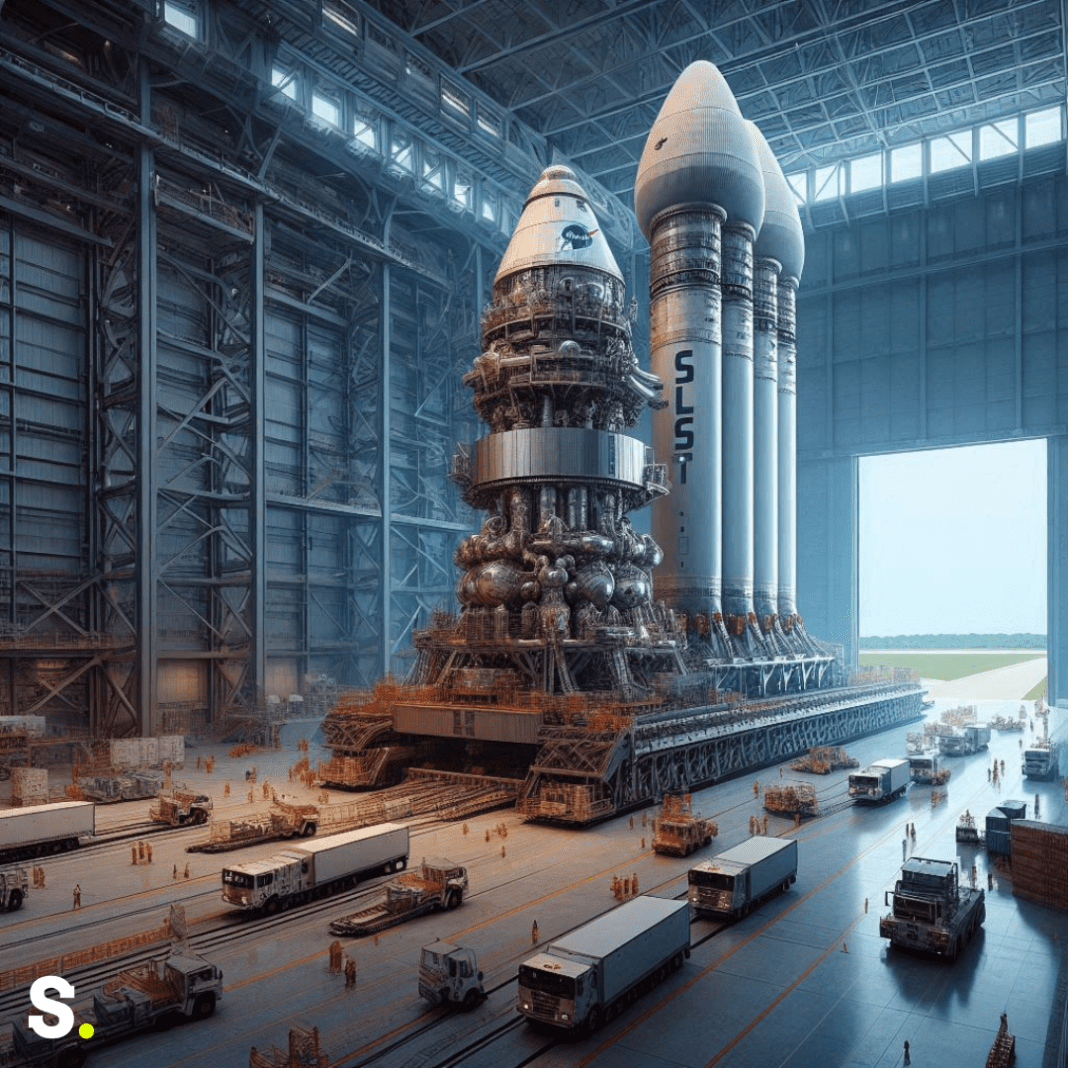NASA’s ambitious Artemis program has reached a major milestone. The core stage of the Space Launch System (SLS) rocket, a central component of the Artemis II mission, has been transported from its manufacturing facility in New Orleans to NASA’s Kennedy Space Center in Florida. This event marks a crucial step towards launching NASA’s first crewed mission to the Moon in over five decades.
Major Move for a SLS Rocket
On July 16, a historic date that commemorates the Apollo 11 mission, NASA orchestrated a major logistical operation. The core stage of the SLS rocket, which stands an impressive 212 feet tall, was carefully transported from the Michoud Assembly Facility in New Orleans to the Pegasus barge. This move is notable because it is the first time since the Apollo era that a complete Moon rocket stage for a crewed mission has been shipped from this facility.
The core stage of the SLS rocket is the largest ever produced by NASA. It is composed of five primary components, including two enormous propellant tanks that hold more than 733,000 gallons of super-chilled liquid propellant. This propellant feeds the rocket’s four RS-25 engines. These engines will burn for just over eight minutes during launch, generating more than 2 million pounds of thrust. In order to launch the rocket and transport the Orion spacecraft’s occupants to the Moon, this enormous power is required.
From New Orleans to Kennedy Space Center
The huge framework of the core stage was moved to the Pegasus barge by engineers using specialized transporters at NASA’s Michoud Assembly Facility. This barge will transport the core stage more than 900 miles across the Gulf of Mexico to NASA’s Kennedy Space Center in Florida. This journey is a critical part of preparing for the Artemis II mission, which will be the first crewed flight of the Artemis program, aiming to return humans to the Moon and create a long-term foothold there.
Upon arrival at Kennedy Space Center, the core stage will undergo further preparations inside the Vehicle Assembly Building. Engineers will work to integrate the core stage with the rocket’s twin solid rocket boosters. These boosters provide additional thrust needed to help lift the rocket off the launch pad. Furthermore, in the fall, Kennedy Space Center will get the adapters required to connect the core stage to the Orion spacecraft. The interim cryogenic propulsion stage, another crucial component, is already at Kennedy Space Center. The Orion spacecraft, which will carry astronauts to the Moon, is also being prepared and is currently located at the center.
Preparing for Launch at Kennedy Space Center
The core stage’s arrival at Kennedy Space Center signifies a pivotal shift from manufacturing to launch readiness. The core stage will be carefully joined with other elements of the rocket and prepared for the upcoming Artemis missions. NASA is already working on future versions of the SLS rocket, with the next configurations being produced at the Michoud Assembly Facility. Starting with Artemis III, Boeing, the prime contractor for the SLS core stage, will use space at Kennedy Space Center for final assembly and preparation.
Building and transporting the SLS core stage is a monumental task that involves extensive collaboration. NASA, Boeing, and Aerojet Rocketdyne, along with numerous other companies, have worked together to make this project a reality. Over 1,100 companies across the United States have contributed to the production of the SLS rocket, showcasing the wide-reaching effort and dedication required for such a complex mission.
The Artemis program aims to achieve several groundbreaking milestones, including landing the first woman and the first person of color on the Moon. The SLS rocket is a critical part of this mission, working in conjunction with other advanced technologies and systems designed for deep space exploration. The successful delivery and preparation of the SLS core stage are vital steps in making these ambitious goals a reality.




